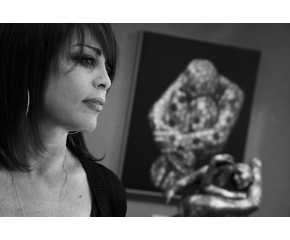
Rabarama
The daughter of an artist, from her early childhood she showed an inborn talent for sculpture. She started her artistic education at the Arts High School in Treviso, and continued later at the Venice Academy of Fine Arts. She graduated with top marks in 1991 and immediately started taking part in a large number of national and international sculpture competitions, earning growing acclaim with both the critics and the general public alike.1995 was a turning-point...
The daughter of an artist, from her early childhood she showed an inborn talent for sculpture. She started her artistic education at the Arts High School in Treviso, and continued later at the Venice Academy of Fine Arts. She graduated with top marks in 1991 and immediately started taking part in a large number of national and international sculpture competitions, earning growing acclaim with both the critics and the general public alike.1995 was a turning-point for her as it marked the start of her working partnership with the Dante Vecchiato gallery, important for the development of her future main artistic themes and for her promotion both in Italy and abroad. From that moment the artist started developing her own highly personal research, which came from a particular vision of the world and life, based on the confrontation of free will, the predestination of events and the consequent risk of reduction of man to a mere biological computer. The artist’s subjects mostly have absent gazes, blanked out by crystallized research which is conditioned by a world governed purely by cause-effect relationships, whose common denominator is the standardized programming of the species.In 2000, at the end of this first phase of her research, the artist exhibited a collection of works at the Mudima Foundation in Milan; they were created by the awareness that every fragment of reality and human being bears the imprint of the original principle. From here a humanity which is in constant metamorphosis rises, where the denial of free will represents just the first phase of a continuously evolving work The membrane or cloak which seems to envelop these figures constantly changes and takes on new signs, symbols and metaphors. The alphabet indicates the internal restriction of language, as well as our singular-plural being (according to the philosopher Jean-Luc Nancy’s conception, which is a common feature of Pirandello’s theatrical works); hieroglyphics, jigsaws and honeycombs are the visualization of the genome, the infinite combinations and possible varieties which are inborn in humanity, visualized in the mental mazes where the many complex forms of the “ego” materialize.This symbolic theme was linked to the creation of a monumental sculpture created for the Boca Raton Museum of Modern Art in Florida, which was installed in 2001.During this period, the artist moves on from her research into DNA and genetics; her figures, which previously had shown no aspirations whatsoever and had just conveyed a status quo, undergo a further metamorphosis; they rip off the skin-wrapping they had been covered in from the beginning, symbolizing the need to cast off their casing, in the relentless attempt to free themselves, an exhausting and never-ending struggle.The first works belonging to this second experimental phase were exhibited at the end of 2000, at the Enrico Navarra Gallery in Paris, as part of the Trans-formation exhibition and at S.Ivo alla Sapienza in Rome.In 2001 Rabarama’s research focused on a series of monumental sculptures with a highly visual impact. These works were displayed in public spaces and foundations, such as the Palazzo Bricherasio Foundation in Turin, the Dolores Olmedo Patio Museum in Mexico City (Mexico), the Fleury Museum, Lodéve (France), Open 2002, Venice Lido (Venice), the important Beijing International Art Biennal (China 2003) and the Museums of San Salvatore in Lauro, Rome.Freedom is achieved by overstepping an ideal boundary, which separates the current condition of genetic and environmental determination from the past one.The next stage of Rabarama’s artistic journey consisted in the creation of men-trees covered in bark and interweaved grass, harking back to the symbiotic, unconscious bond the human race has with the great “Mother”. Metamorphosis of the shape and aspiration to absolute freedom: these are the guidelines of this artistic phase.Rabarama is considered an all-round artist by her critics and most demanding collectors, thanks to the steady flow of official recognition and awards she has received on the national and international art scene.Her production is quite eclectic and varied and includes terracotta sculptures, painted bronze, pieces in marble and glass, oil paintings, resin inclusions, artistic gold jewels, recent rubber monotypes and graphic work.In the past few years a large number of exhibitions have been organized and she has enjoyed international acclaim; for example in China in 2004, following her participation in the already mentioned first Chinese Modern Biennial which took place in Beijing, her one-woman exhibition was displayed in the rooms and gardens of the He Xiangning Art Museum of Shenzen from February to April; the same exhibition was then taken to the Millennium Monument Art Museum in Beijing, where the monumental sculpture Bozzolo was presented especially for the occasion. It was donated to the National Association of Chinese Painters and placed in the Art Museum in 2005 during the Chinese Art Biennal. The same travelling exhibition was then taken to Jinan and Shanghai.At the beginning of 2005 the artist exhibited her work at la Estancia Cultural Centre in Caracas, while in June the prestigious Dutch gallery Etienne & Van Loon (which organizes a number of cultural events and happenings) invited her for the second time to display her signature monumental sculptures in the open spaces and along the streets of the town, having already displayed her work alongside that of famous names such as Jeff Koons.In June she held a one-woman exhibition at the Fundaciòn Sebastian in Mexico City.During the summer of 2007, the Identità exhibition was held at Villa Genovese Zerbi in Reggio Calabria, while in November an unforgettable one-woman exhibition entitled Dream of Transformation was inaugurated at the Vecchiato Art Galleries in Padua.In 2008 other important events confirm Rabarama’s international success: in July her extraordinary participation to the Beijing Biennal and in October Rabarama a Paris, an event in which wonderful monumental sculptures are exposed in Paris’s most beautiful squares such as Place de la Sorbonne and Place du Panthéon. In December Rabarama in Mizner Park at the Boca Raton Museum in Miami opened: the public visiting the park and the museum discovers the charm and strength of Rabarama’s works.The charming Saint-Tropez, celebrated town on the sea in Southern France, is the location of the exhibition Rabarama dans la Presqu’île de Saint-Tropez, thanks to the collaboration between Vecchiato Art Galleries and the Municipalities of Saint-Tropez, Ramatuelle, Gassin and Grimaud, from the middle of March to October 2009.The exhibition involves some important and typical areas of the city and the surrounding territory, mistery and nature blend together and the sculptures become part of the sweet daily life of the Côte d’Azur, welcoming, surprising and involving the spectator who discovers, as he goes along, a path in which strange bronze creatures come to life. Creatures that tear their heavy clothes, perform amazing acrobatics or reflect under the sun on man’s freedom and on the constant struggle to escape from a destiny that seems to be inevitably already set.Now the bandages, the letters, or the jigsaw pieces that cover Rabarama’s creatures like valuable mosaic become codes that must be interpreted to read the future of each one of us, and at the same time wrappings to be destroyed to re-conquer our freedom.In June 2009, Rabarama’s Comes to life important exhibition in Oisterwijk, Netherlands, is carried out with the collaboration of the Etienne Gallery during Oisterwijk Sculptor 2009, a yearly event to which just few selected artists are invited. That was an occasion for Rabarama to confirm her role as one of the protagonists of the event, with her solo exhibition at the Dutch gallery.The year 2010 witnessed the realization of the ambitious exhibition project named Ubiqua 2010: Cannes, Orta San Giulio (Novara) and London were the selected cities where our great artist showed her works.Prestige, fascination and investment are the characteristics which have identified this ambitious exhibition venture.Thirteen works decorated the lively and glamourous Cannes, in conjunction with the famous Film Festival, for the exhibition “Rabarama sur la Croisette”, from March 30th to October 28th. Four of these works, unseen and awaited sculptures in Carrara marble, could be admired directly on the Croisette, whereas nine monumental painted bronze sculptures welcomed the visitors to the garden of the Grand Hotel of Cannes. There were three more artworks exhibited in Saint Tropez: the sculpture 'Co-stell-azione' on the beach of Pampelonne near the 55 Club, 'Im-plosione' in Gassin and “Bozzolo” at the Rond Point at the entrance of Ramatuelle.Over the same period, from April 24th to October 3rd, in occasion of the Ortissima Percorsidorta 2010, an event which had hosted in previous years Arnaldo Pomodoro and Mimmo Paladino, 23 sculptures were exhibited. Ten of them were shown outdoor, on the streets of the picturesque medieval town of Orta San Giulio, and thirteen smaller ones inside Palazzo Penotti Ubertini. The exhibition, curated by Luca Beatrice (who also had curated the Biennale of Venice in 2009), hosted also 7 oil paintings and offered the chance to reflect on the infinite nuances of style in Rabarama’s art.Twenty works, of which two monumental ones, welcomed the visitors directly to the City, the famous economics and finance district of London, at the Moor House from May 5th to June 5th, as a further confirmation of the international value of this amazing artist.>From June to September 2011 Rabarama had a solo exhibition in Florence: “ANTICOnforme”. Her fascinating sculptures met the audience in some of the most picturesque and ancient places of the city. The exhibition is once again curated by the great critic Luca Beatrice.Rabarama’s artistic value is confirmed by her extraordinary participation to the Biennale of Venice, the 54th International Art Exhibition, where she was chosen as artist for the Italian Pavilion. Starting from spring 2013 contemporary italian artist Rabarama monumental works, bronzes and marbles, have been exhibited on Versilia seaside and at Pisa Airport, thanks to the collaboration with the Henraux Foundation. The exhibition has gone on afterward in the city of Lucca, along the beautiful walls of the medieval town.
More
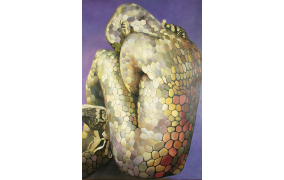
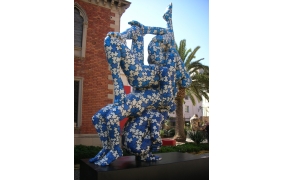

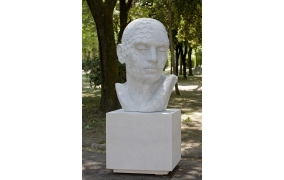
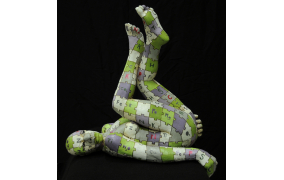
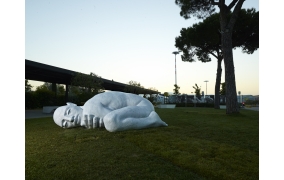
Follow us